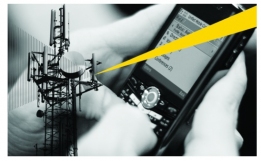Economics of Sharing - Huge cost savings for operators

-
With the new entrants being awarded 2G licences, existing operators planning to roll out pan-Indian operations, telecom penetration increasing in the rural areas, greater demand for better quality of service, and new technology rollouts like Wi-Max, the demand for towers is set to go up. By 2012, the demand is estimated to touch 330,000-350,000. While the number of subscribers per base transceiver station is slated to decline from 1,100-1,200 to 800850, the tenancy ratio is estimated to increase from around 1.2 to 1.8-1.9.
In this scenario, the economics of sharing are substantial. With the industry's power, fuel rental and security expenses being around $1 billion each, cost optimisation is essential. The passive infrastructure cost component in capital expenditure is going up. With sharing, operators can save $8-$13 billion in capital expenditure in four years.
Going forward, sharing will become exceedingly important. Operators will have to cater to low-investment customers in the rural areas, spectrum scarcity will become more acute, and 3G rollouts will require two to three times more towers.
Operators' opex savings from infrastructure sharing will be $1 billion per annum, mainly through a reduction of Rs 18,000-20,000 per tower per month in the fixed portion of opex, which comprises ground rent, security, etc. Operators might also enjoy cost savings of Rs 25,000-30,000 per tower per month for semi-variable items like diesel and electricity. Infrastructure sharing will enable operators to maintain their operating margins despite falling tariffs, keep rentals low despite high demand, and service the rural population characterised by a high cost per subscriber.
Operators hiving off their tower subsidiaries into independent companies are monetising their existing investments.Globally, tower assets are valued at between $450,000 and $650,000 per tower. Reliance Communications' (RCOM) towers, for example, are worth approximately $500,000 each and account for 25 per cent of RCOM's market cap.
Operators' margins from infrastructure sharing are dependent on tenancy ratios, which have a positive relation with profitability. Rental revenues; earnings before interest, tax, depreciation and amortisation (EBITDA); EBITDA margins; and profit after tax (PAT), all rise with the increase in the number of tenants. At the same time, the rent per tenant decreases.
It is estimated that at a unit tenancy ratio, 31,000 towers generate rental revenue of Rs 372 million per month, EBITDA of Rs 456 million, EBITDA margin of 42 per cent, and PAT of Rs -311 million. However, with a tenancy rate of three per tower for 26,350 towers, rental revenue increases to Rs 949 million per month, EBITDA to Rs 733 million, EBITDA margin to 77 per cent, and PAT to Rs 176 million.
Going forward, there is expected to be substantial merger and acquisition activity in the telecom infrastructure industry. Tower Vision, XCEL Telecom, Independent Mobile Infrastructure Limited, TVS ICS Limited and Aster Infrastructure are all likely to consolidate with leading pure-play independent companies. GTL and Quippo are likely to be the frontrunners. Among the mobile service providers, Bharat Sanchar Nigam Limited, Tata Teleservices and Aircel have a high probability of selling their tower assets.
Prashant Singhal, partner, Ernst & Young
- Most Viewed
- Most Rated
- Most Shared
- Related Articles
- Manufacturing Hub: India emerges as a ke...
- TRAI performance indicator report for Se...
- Prashant Singhal, partner, telecom indus...
- 2G spectrum scam: continuing controversy
- An Eventful Year: Telecom highlights of ...
- Telecom Round Table: TRAI’s spectrum p...
- Manufacturing Hub: TRAI recommends indig...
- Linking Up: ITIL to merge with Ascend
- High Speed VAS - Killer applications w...
- Bharti Airtel seals deal with Zain - Zai...






